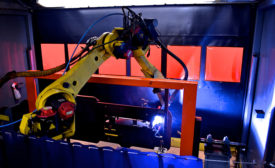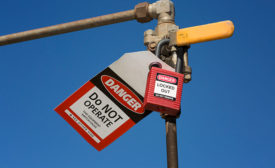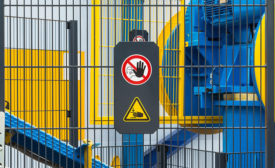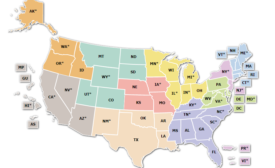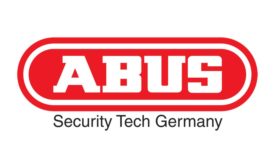Home » machine guarding
Articles Tagged with ''machine guarding''
Isolating hazardous energy with maintenance procedures
Lockout-tagout devices must resist corrosives, wet environments, improper removal
June 26, 2019
Safeguards for automated operations
Physically protect your workers and minimize the “safety zone” footprint.
May 28, 2019
2019 top standards- OSHA Most Frequently Violated Standards
OSHA lockout tagout standard
Control of Hazardous Energy (Lockout-Tagout) General Industry (1910.147)
January 4, 2019
2019 top standards- OSHA Most Frequently Violated Standards
OSHA machine guarding standard
OSHA’s machine guarding standard was the ninth-most-frequently cited agency standard in FY 2018.
January 1, 2019
2019 top standards- Global Standards
ANSI-ASSP Z10 safety and health management system standard
December 20, 2018
Eliminate excuses to cut corners on safety
Check out the NEW LockPoint Video on YouTube
November 15, 2018
Become a Leader in Safety Culture
Build your knowledge with ISHN, covering key safety, health and industrial hygiene news, products, and trends.
JOIN TODAYCopyright ©2024. All Rights Reserved BNP Media.
Design, CMS, Hosting & Web Development :: ePublishing



